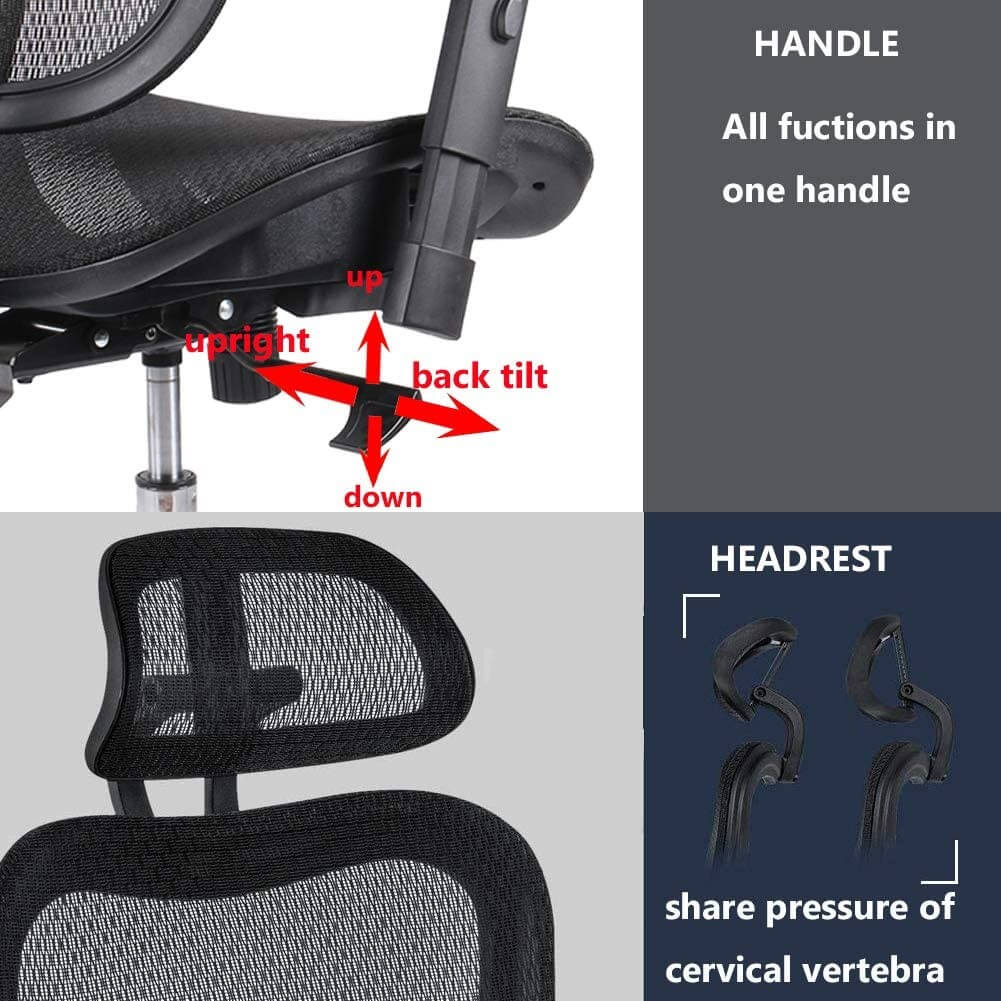Good swivel chairs are an indispensable item for office workers. Its comfort, especially the backrest’s recline, affects the occupants’ health and work performance. So, how to make office chair lean back? Let’s learn about this in the article below for an effective sitting posture.
4 Easy Steps To Make Office Chair Lean Back
After purchasing and installing, users can adjust the chair’s features to suit them. The proper adjustment makes the user more comfortable sitting for too long, reducing back pain and other parts.
Whether the swivel chairs range from cheap to expensive, they have a piston unit with a flexible recline feature. Depending on the purpose of the person sitting to be able to adjust the star accordingly, all include the following 4 steps:
Step 1: Keep a distance of 2 in from the chair to your knees
Sit on it in the most comfortable position so that your feet are in contact with the floor when you sit. Lean your back against the backrest so the distance from the seat to your knees is at least 2 in.
Step 2: Locate the adjustment lever on your seat
Next. The right lever adjusts its height, and the left adjusts its recline. Once you’ve found it, you’ll align our heads to your needs.
If you want to tilt the seat face forward, push it down and release the knob. Leaning forward will help support blood flow to the lower body, which is helpful for those working on something.

Step 3: Lean back on the chair
For those who want to lean back, push the knob again and release it because this step allows the user to set it in a more reclined position while still keeping the foot on the ground. This tilt helps shift part of users’ body weight to the backrest for increased comfort.
Step 4: Secure the seat to keep the fit high
You can repeat the above operations many times if you are still unsatisfied. Recline it slowly until you feel the most comfortable. To break the recline at a certain angle, use the hand to move it to the position at the back of the mattress.
Once the recline or height is adjusted, you must fix the swivel chairs to achieve the desired position.
Read more: How To Clean An Office Chair

How To Adjust Other Parts?
It is not hard to adjust your other chair’s parts if you follow our guidelines. Follow below:
The seat
Pull up the height lever to increase the seat’s height and release the weight from the middle. It will automatically raise. Then remove the lever to fix this height.
When your seat is too high, and you want to lower it? Please sit on it and pull the lever up. When reaching the appropriate height, release the hand to pull the lever.
The Backrest
To raise the backrest, we will do it by grasping it on both sides (top and bottom), then continue to lift it carefully until we reach the proper distance for you. A promising sign you’re doing it right is you’ll hear a clicking sound, significantly when the backrest increases every 2 in.
Conversely, to reduce the backrest height, you must raise it to its highest peak and then push it to a lower position. Lower it slowly until the desired position is reached.
Handrails
When you want to change the height of the handrail, pull the trigger on the front and move it up or down. Next is to release the trigger to fix.
To increase or decrease the distance between the two handrails, loosen the buttons on the armrest. Move it until the desired length is reached, then tighten the knobs again.
Headrest
For models of office chairs with headrests, it is necessary to adjust this part to be most comfortable. When you want to lift, grab the headrest and pull it up. You’ll also hear a clicking sound indicating that the drag location is locked.
To lower it, we raise the headrest to the highest position, like a backrest, and then slowly lower it. When you hear a click, it’s fine.
Read more: How To Reupholster An Office Chair
Conclusion
Choosing an office chair that suits your needs is a priority, but ensuring you set it up correctly is also essential. Understanding how to make an office chair lean back helps you find the most comfortable position and helps maintain the durability of it.
FAQ





